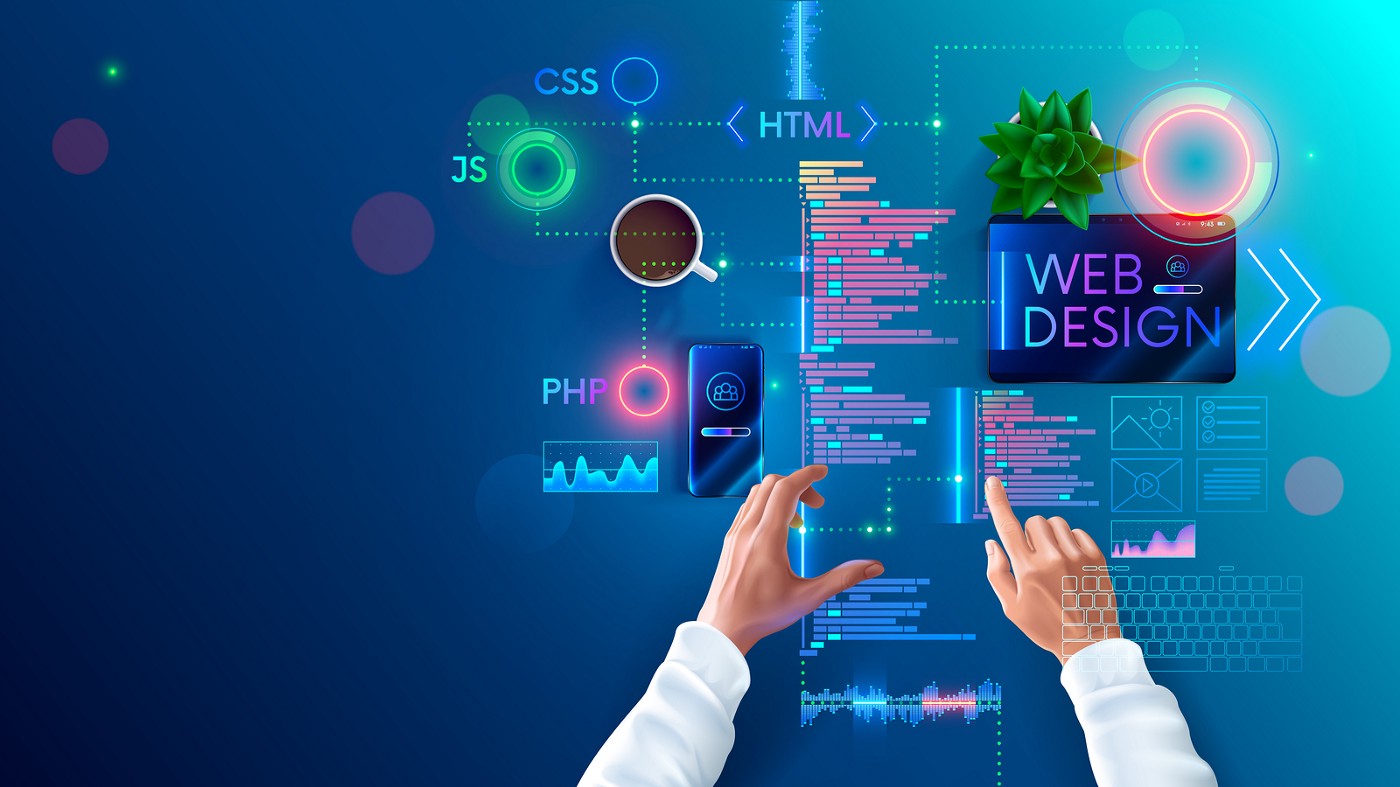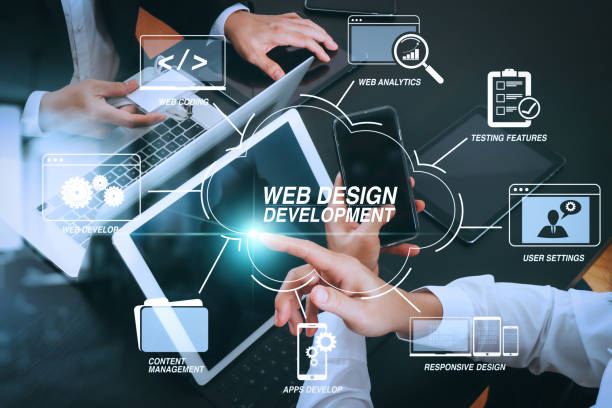Aligned Position Web Design: Building Responsive, Mobile-Friendly Websites for Modern Users
Aligned Position Web Design: Building Responsive, Mobile-Friendly Websites for Modern Users
Blog Article
The Very Best Kinds Of Web Layout to Improve User Experience and Interaction
In the ever-evolving landscape of digital interaction, the effectiveness of Web style substantially impacts customer experience and engagement. Numerous style techniques, such as minimalist, receptive, and interactive formats, each offer special benefits that can accommodate diverse user needs. Comprehending which types of Web design best offer these objectives can be crucial for organizations intending to boost client fulfillment and retention. The inquiry stays: which design elements truly resonate with customers and foster purposeful involvement? The expedition of these concepts discloses critical understandings that might redefine your method to website design.
Minimalist Website Design
As electronic landscapes come to be progressively chaotic, minimalist website design has become a powerful technique to boosting individual experience. This layout viewpoint focuses on simpleness, concentrating on important elements while eliminating unneeded disturbances. By using ample white area, simple navigation, and a minimal shade combination, minimal style promotes quality and guides individual attention to crucial material.
The core concept of minimalist website design is to create a smooth interaction for users. By reducing cognitive load, customers can swiftly grasp information without feeling bewildered. This straight strategy not just improves usability but also motivates interaction, as visitors are most likely to explore a site that is visually appealing and simple to navigate.
Furthermore, minimalist layout typically stresses typography and images, making use of these elements tactically to share messages efficiently. This concentrate on necessary components can boost brand name identification and create a memorable user experience. Essentially, minimal website design is not just a trend; it is a thoughtful methodology that acknowledges the importance of user-centered style. By removing additional elements, designers can produce a much more interesting, reliable, and enjoyable Web experience for all users.
Responsive Website Design
In today's varied electronic atmosphere, responsive Web style has ended up being vital for producing a seamless user experience across a wide variety of tools. As users gain access to sites on smartphones, tablet computers, laptop computers, and desktop computers, the ability of a website to adapt its layout and web content to different display sizes and resolutions is essential.
Responsive Web style employs flexible grids, images, and CSS media questions to ensure that Web material exists optimally, no matter the gadget made use of. This approach not just boosts the visual appeal of a site however additionally substantially improves usability. Individuals are more probable to engage with a website that uses a constant experience, as it gets rid of the disappointment of having to zoom in or scroll excessively.
In addition, online search engine, including Google, focus on mobile-friendly web sites in search rankings. By adopting receptive style, organizations can improve their presence and reach a broader target market. This approach additionally simplifies website maintenance, as a solitary version of the site can deal with all gadgets, decreasing the need for multiple variations. In summary, responsive website design is a fundamental method that improves customer experience, engagement, and overall satisfaction.
Interactive Web Layout
Responsive Web style lays the groundwork for improving customer experience, but interactive Web style takes this a step further by engaging individuals in a more dynamic method - Aligned Position Web Design. By incorporating components such as computer animations, clickable prototypes, and real-time comments, interactive Web design captivates users, attracting them right into a richer browsing experience
This technique not only cultivates involvement however also encourages users to explore content actively instead than passively consuming it. Strategies such as gamification, where users make benefits for completing jobs, can dramatically enhance the moment invested in a website and improve overall complete satisfaction. Interactive functions can simplify complex details, making it a lot more digestible and enjoyable.

Including interactive design elements can also bring about greater conversion prices, as users are more most likely to involve with a website that actively includes them. Aligned Position Web Design. Eventually, interactive website design changes customer experiences into remarkable trips, making sure that site visitors return time after time
Flat Design
Defined by its minimalistic method, flat layout emphasizes simpleness and performance, stripping away unnecessary elements and concentrating on important you could try here features. This design approach prioritizes functionality, making sure that individuals can navigate interfaces effortlessly and performance. By utilizing a clean visual, level layout removes the clutter usually found in a lot more luxuriant designs, consequently boosting individual focus on content and performance.
The characteristic of flat style lies in its usage of bold shades, straightforward typography, and geometric shapes. These aspects contribute to an aesthetically attractive interface that is both contemporary and friendly. Furthermore, flat layout cultivates a feeling of clarity, permitting individuals to determine crucial activities and info without interruption.
Moreover, flat style is especially efficient in responsive Web layout, as its simpleness translates well across numerous gadgets and display check my site sizes. By concentrating on important features, level layout not only satisfies user requirements yet additionally urges seamless communication, making it an essential element of efficient Web style methods.
Flexible Website Design
Flexible website design personalizes the user experience by producing multiple fixed formats tailored to various screen sizes and devices. Unlike receptive style, which fluidly changes a single layout, adaptive design utilizes unique designs for certain breakpoints, ensuring optimal presentation on numerous systems. This approach see this site allows developers to concentrate on the unique characteristics of each device, enhancing usability by providing specifically what customers require based upon their context.
One of the main benefits of flexible Web layout is its capability to maximize load times and performance. By offering customized content and images that fit the user's tool, web sites can decrease information use and enhance loading rates. This is particularly beneficial for individuals with slower links or limited information strategies.

In addition, flexible design assists in a much more consistent and controlled branding experience. Given that designers produce numerous designs, they can make certain that the visual aspects straighten with the brand name's identity across different systems - Aligned Position Web Design. This results in a cohesive customer experience, boosting involvement and advertising customer retention
Conclusion
Finally, the combination of minimal, receptive, and interactive website design concepts dramatically improves customer experience and involvement. Minimalist design cultivates quality and focus, while responsive style makes sure versatility throughout various tools, promoting access. Interactive layout mesmerizes individuals with dynamic components, motivating expedition and personalization. Jointly, these design approaches add to the production of easy to use settings that not just enhance contentment but likewise drive greater conversion prices, underscoring their critical importance in modern Web style approaches.

Minimalist layout fosters quality and emphasis, while receptive layout ensures flexibility throughout different gadgets, promoting ease of access. Collectively, these design approaches contribute to the development of straightforward settings that not only boost complete satisfaction yet additionally drive higher conversion rates, underscoring their vital significance in modern Web layout techniques.
Report this page